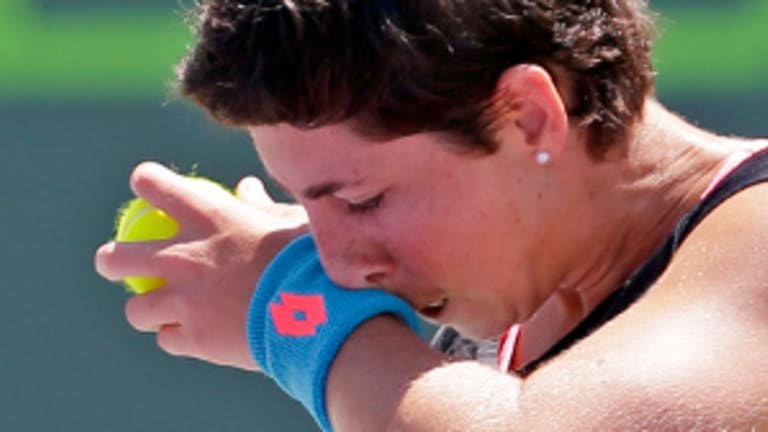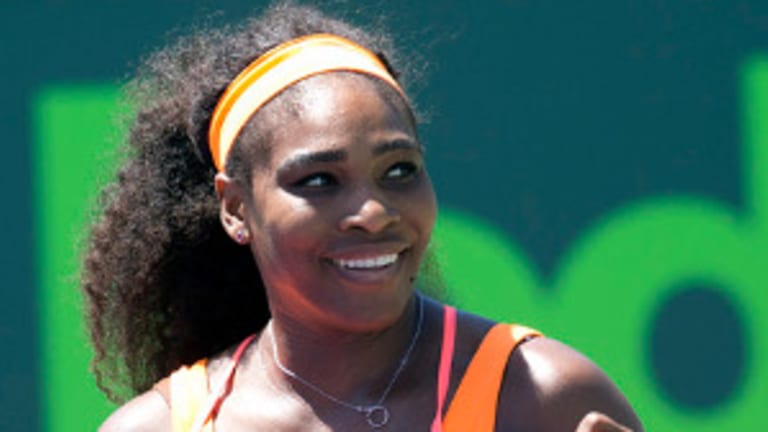Normally a tennis player will tighten up while serving for a match, or for a set, or when he or she gets to a tiebreaker. It’s rare, however, to see one become so nervous about getting on the scoreboard that she struggles to hit the ball over the net. But that’s what happened to Carla Suarez Navarro when she faced Serena Williams on Saturday in Miami. Serving at 0-1, with a chance to win the game, Suarez Navarro double-faulted twice before finally squeaking out a hold. This was unusual, but in the Spaniard’s case it wasn't surprising. When she played Serena at the U.S. Open two years ago, she suffered a humiliating double-bagel defeat in Ashe Stadium, and on her birthday to boot—not the kind of loss you forget easily. Avoiding a repeat of that sad disaster was job one for Suarez Navarro on Sunday; from the beginning, the pressure was on to win a game.
Mission accomplished.
Barely.
It turned out that Suarez Navarro was right to be anxious about getting her game in early, before Serena woke up and loosened up. She would win just one more, as Serena rolled to the Miami Open title, 6-2, 6-0, in 56 minutes. Those scores could, technically, have been worse, but few finals on either tour in 2015 will be as one-sided as this one. Serena won 56 points to her opponent’s 24, and 21 of 22 points on her first serve. Suarez Navarro managed to take two of the first four games, but when she gave away the break at 2-3 with a series of errors, Serena relaxed and was on her way.
This is obviously a bad match-up for the 5’4” Suarez Navarro. She has played Serena five times, and the 10 sets have gone like this: 6-0, 6-3, 6-2, 6-0, 6-0, 6-0, 6-2, 6-3, 6-2, 6-0, all in Serena's favor. You might think that, with her long topspin strokes, Suarez Navarro would have more success on clay, but you would be wrong: Serena has won both of their matches on dirt with ease.
Carla’s shots sit up for Serena, and her one-handed backhand, as nice as it is to watch, doesn’t give her much chance to counter-punch with pace. One good angle is all Serena needs to gain an overwhelming edge in a point.
“The key,” Serena said afterward, “was to stay focused and not let her play her game, because she’s so good at it.”

